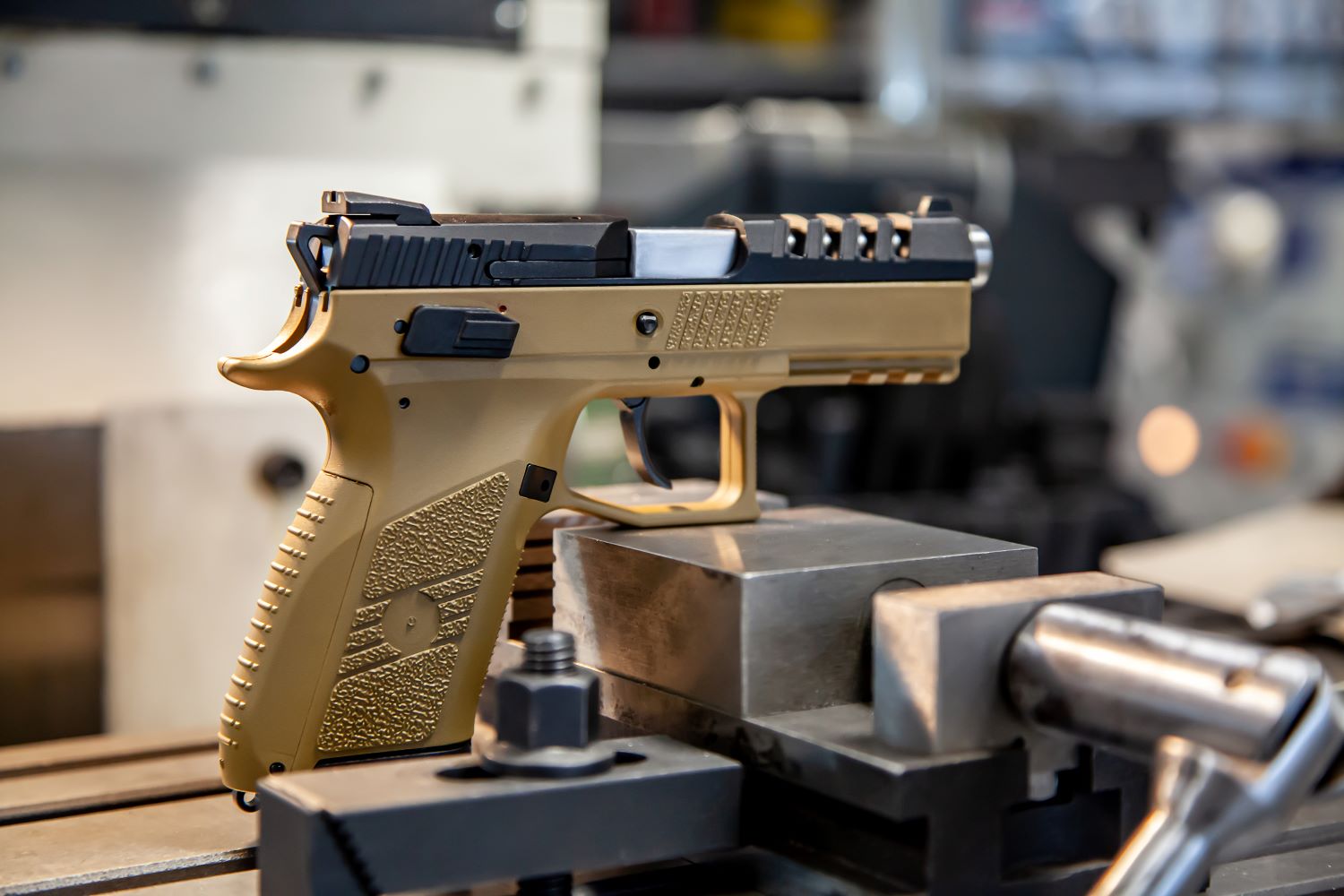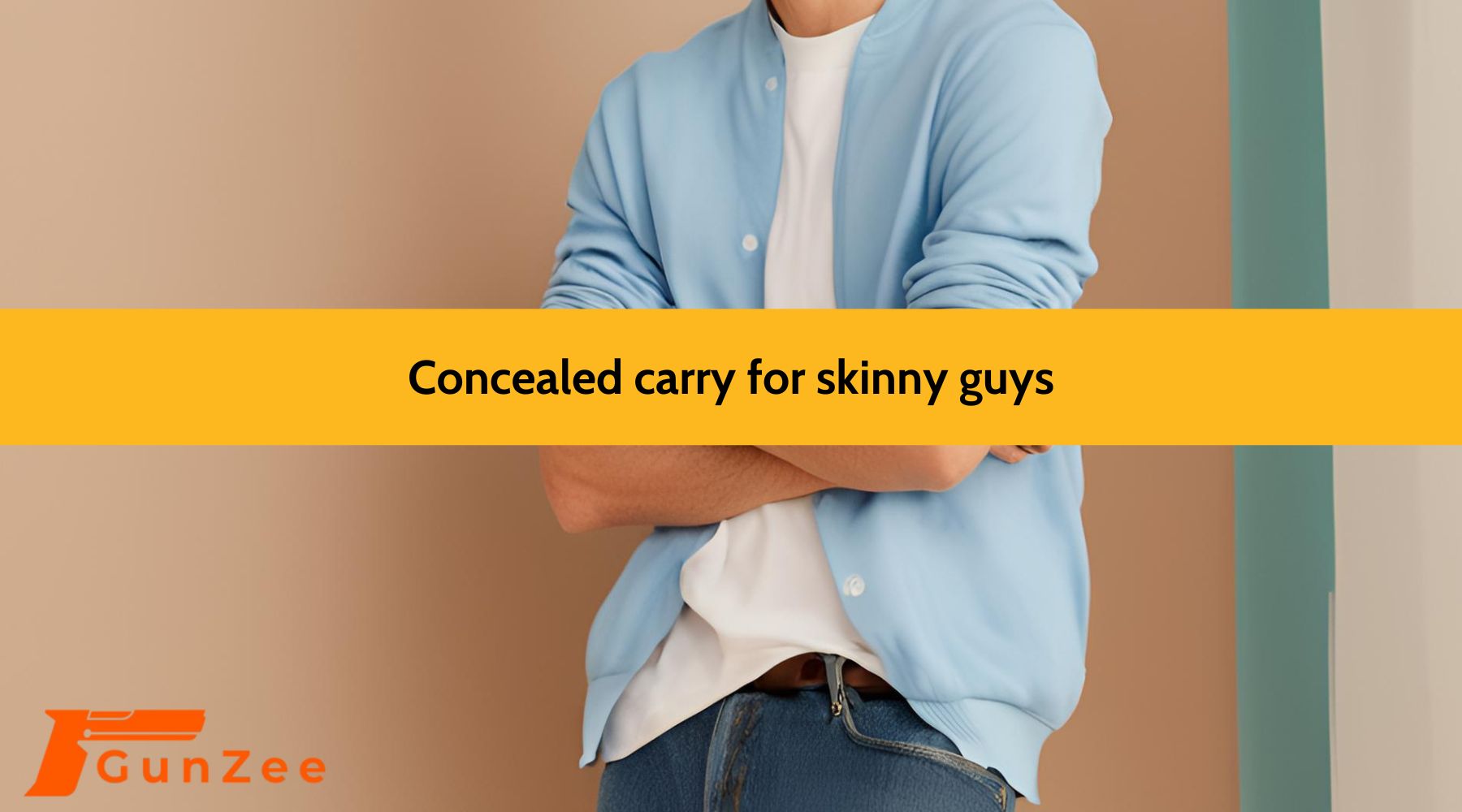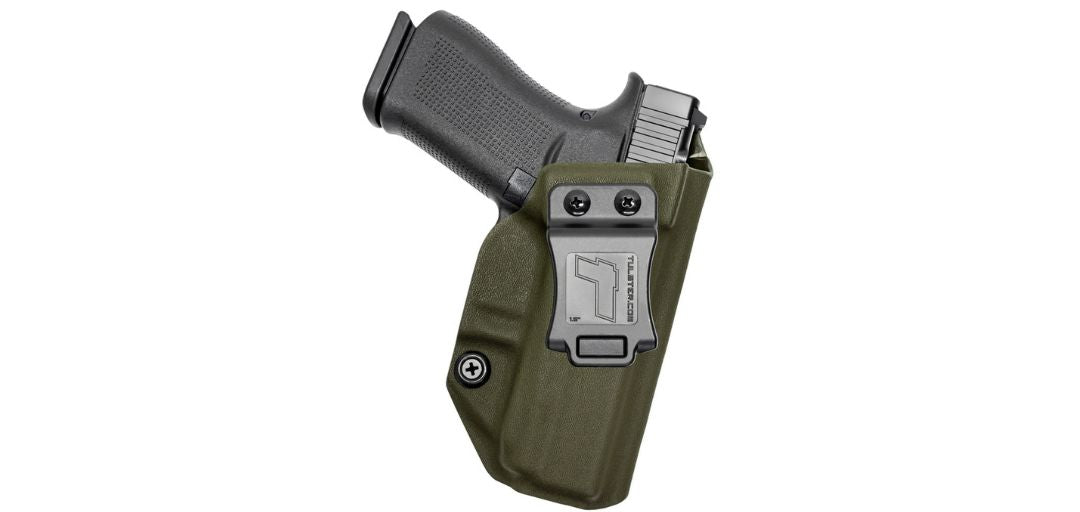Concealed carry presents a unique set of challenges, especially for individuals with larger hands. Many firearms, holsters, and carry methods are designed for average-sized hands, which can make concealed carry uncomfortable or difficult for big-hand users. This comprehensive guide will address key considerations for those with larger hands, helping you find the best concealed carry options, from positioning and holsters to clothing, accessories, and training techniques.
Comparing Concealed Carry Positions for Big-Handed Individuals
Choosing the right concealed carry position is essential for both comfort and accessibility, especially if you have larger hands. Different positions offer various advantages, but for those with big hands, some are more optimal than others. Here’s a breakdown of the most common concealed carry positions and how they suit big-hand users:
1. Appendix Carry (AIWB)
Appendix Inside the Waistband (AIWB) is a favored position for many carriers because of its accessibility and concealability. For people with big hands, the key advantage of AIWB is that it keeps the firearm directly in front of the body, making it easy to draw and control. However, larger hands may find it difficult to carry subcompact or micro-compact pistols in this position as they can feel too small, making the draw awkward. Opting for a slightly larger firearm or one with an extended magazine can improve the feel and usability.
2. Strong-Side IWB Carry (3 or 4 o'clock)
This position places the holster along the side of the body, either on the hip or just behind it. It’s a good balance between comfort and concealability. For big-hand users, the extra space on the side of the body can help accommodate a larger grip and allow for a smoother draw. However, larger grips may "print" more through clothing, so careful attention to clothing fit is necessary.
3. Behind-the-Hip Carry (5 or 6 o'clock)
Behind-the-hip carry is another viable option for big-hand users, as the firearm is positioned behind the waist, offering plenty of room for the hand to grip the firearm securely. However, this position can make drawing more challenging and slower, as it requires reaching around the back. Additionally, sitting with a firearm in this position may cause discomfort.
4. Shoulder Holster
Shoulder holsters are not as common as waistband options, but they can be very comfortable for big-hand users. The firearm is carried under the arm, providing easy access and a comfortable draw. However, shoulder holsters are harder to conceal and typically require a jacket or outerwear, making them a seasonal or situational choice.
Holster Options for Big-Hand Users: Comfort, Retention, and Ease of Draw
Holster selection is critical for effective concealed carry, particularly for people with larger hands. A good holster should offer security, comfort, an easy draw, as well as be comfortable (add a GunZee to maximize comfort). Here are some holster types that cater well to big-hand users:
1. Holsters with Adjustable Retention
For individuals with big hands, holsters that offer adjustable retention are invaluable. They allow users to fine-tune the holster’s grip on the firearm, ensuring that it’s both secure and easy to draw. A holster that grips too tightly can make it difficult for larger hands to draw quickly, so customization is key.
2. Holsters with Enhanced Grip Space
Some holsters provide additional clearance or raised sweat guards, which create more space around the grip of the firearm. This extra room is particularly useful for those with big hands, as it allows a better purchase on the firearm when drawing. It also helps prevent the hand from rubbing uncomfortably against the body during carry.
3. Paddle Holsters
Paddle holsters attach to the waistband without requiring a belt, making them easy to adjust for comfort. They often offer more room for the hand to grip the firearm and can be a good option for big-hand users, especially for range use or when open carry is possible. However, they are bulkier and less concealable than other holster types.
4. Customizable Holsters
Some companies, like Alien Gear and CrossBreed, offer modular holsters that can be adjusted for ride height, cant, and retention. These options allow big-hand users to tweak the holster’s settings for maximum comfort and ease of draw, ensuring that the firearm sits at the perfect height and angle for a smooth and controlled draw. Additional comfort can be gained by adding our GunZee holster cushions.
Clothing Options for Concealed Carry with Big Hands
Concealed carry often requires careful wardrobe considerations, especially for big-hand users who may carry larger firearms. The right clothing can make all the difference in comfort and concealment.
1. Loose-Fitting Shirts and Jackets
Big-hand users often carry larger firearms, which can be harder to conceal under form-fitting clothing. Loose-fitting shirts, jackets, and hoodies can help conceal larger grips and reduce printing. Look for clothes made from thicker or patterned fabrics, as they help to break up the outline of the firearm.
2. Untucked Shirts for Waistband Carry
Carrying inside the waistband (IWB) with larger hands and firearms can be challenging if you tuck in your shirt. Consider untucked button-up shirts, polo shirts, or casual T-shirts that drape naturally over the holster. These offer better concealment while maintaining a casual, stylish look.
3. Layering
Layering clothing, such as wearing a jacket or a vest over your primary shirt, provides extra concealment for larger firearms. This can be especially beneficial in cooler weather, allowing you to carry more comfortably while keeping the firearm hidden.
4. Belts and Accessories
A sturdy gun belt is essential for any concealed carrier, but especially for big-hand users carrying larger firearms. Look for reinforced belts that can support the weight of your firearm without sagging or causing discomfort. PewPew Tactical provides a great review of belts for concealed carry.
Accessories and Modifications for Improved Grip and Control
For people with big hands, small or compact firearms can feel awkward to handle. Fortunately, there are several accessories and modifications that can improve the fit and control of these firearms.
1. Extended Magazines
Many compact and subcompact pistols have smaller grips, which can make them difficult for big-hand users to handle. Extended magazines add extra length to the grip, making the firearm more comfortable to hold while also increasing ammunition capacity. This is an easy and effective way to improve control without drastically increasing the size of the firearm.
2. Grip Enhancements
Rubberized grip sleeves or grip tape can make a big difference in how a firearm feels in your hand. These accessories improve the texture and grip, ensuring that the firearm doesn’t slip or feel unstable in larger hands. Some manufacturers offer aftermarket grips that are specifically designed for users with larger hands.
3. Trigger Guards
Larger hands can sometimes interfere with proper trigger placement, especially on smaller firearms. Aftermarket trigger guards or modifications can help by offering more room for the trigger finger and improving overall safety and control.
4. Slide Extensions and Slide Racking Aids
Racking the slide on a small firearm can be difficult for big-handed individuals, particularly if the firearm is compact. Slide extensions or racking aids provide extra surface area, making it easier to manipulate the slide and ensuring a reliable grip during manipulation.
Training Tips and Techniques for Big-Handed Users
Training is essential for anyone who carries a concealed firearm, and big-hand users should pay special attention to techniques that can improve comfort and control. Here are some tips to keep in mind:
1. Practice Drawing from Concealment
A key challenge for big-hand users is effectively drawing from a concealed position without fumbling or snagging on clothing. Regular practice with your chosen carry method and holster is essential. Focus on building muscle memory for smooth and quick draws, and consider practicing with larger clothing to mimic real-world conditions.
2. Adjust Your Grip for Smaller Firearms
When carrying a compact or subcompact firearm, big-hand users may need to adjust their grip technique. One effective method is the "thumb-over-thumb" grip, which helps maintain control and mitigate recoil, especially when there is limited space on the grip.
3. Dry Fire Practice
Dry fire practice, where you practice drawing and firing without live ammunition, can help build proficiency in handling smaller firearms with larger hands. This kind of training allows you to focus on proper grip, trigger control, and sight alignment without the distractions of recoil or noise.
4. Focus on Recoil Management
Larger hands may struggle with controlling recoil on smaller firearms. During live fire practice, work on maintaining a firm grip and proper stance to manage recoil effectively. Consider training with firearms that have grip enhancements or aftermarket recoil springs to reduce felt recoil and improve follow-up shots.
Conclusion
Concealed carry for big-handed individuals requires careful consideration of firearm size, holster options, clothing, and accessories. By selecting the right concealed carry position, holster, and firearm modifications, big-hand users can achieve a comfortable and secure concealed carry experience. Regular training and attention to technique will ensure that you remain confident and prepared in any self-defense situation.



